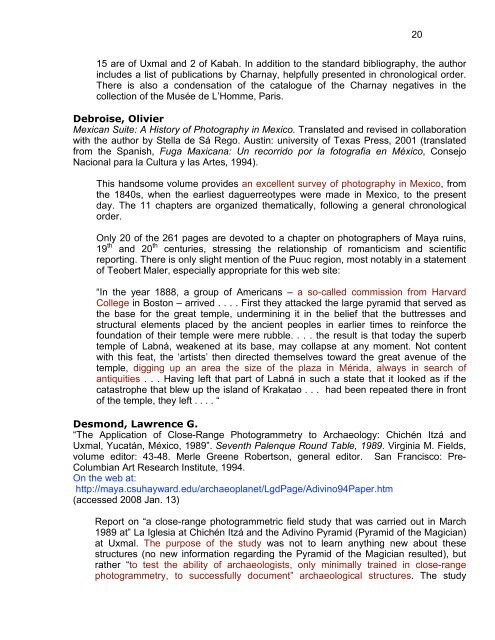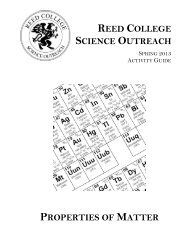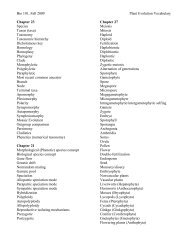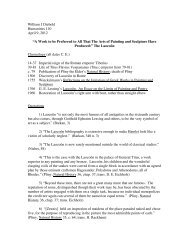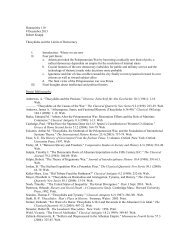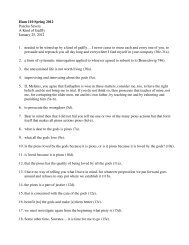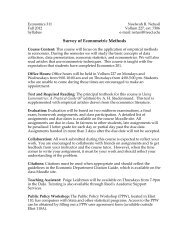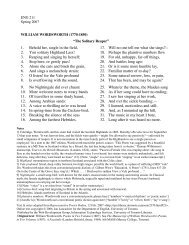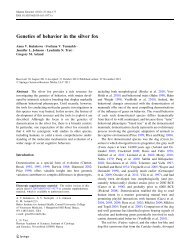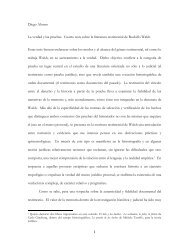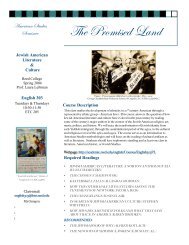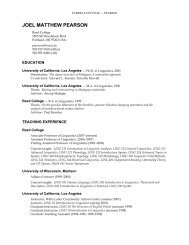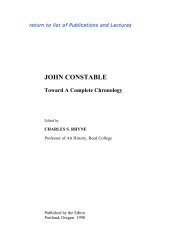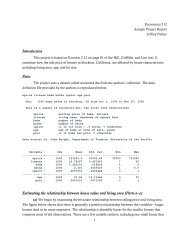Graphic and Photographic Documentation - Reed College
Graphic and Photographic Documentation - Reed College
Graphic and Photographic Documentation - Reed College
You also want an ePaper? Increase the reach of your titles
YUMPU automatically turns print PDFs into web optimized ePapers that Google loves.
15 are of Uxmal <strong>and</strong> 2 of Kabah. In addition to the st<strong>and</strong>ard bibliography, the author<br />
includes a list of publications by Charnay, helpfully presented in chronological order.<br />
There is also a condensation of the catalogue of the Charnay negatives in the<br />
collection of the Musée de L’Homme, Paris.<br />
Debroise, Olivier<br />
Mexican Suite: A History of Photography in Mexico. Translated <strong>and</strong> revised in collaboration<br />
with the author by Stella de Sá Rego. Austin: university of Texas Press, 2001 (translated<br />
from the Spanish, Fuga Maxicana: Un recorrido por la fotografia en México, Consejo<br />
Nacional para la Cultura y las Artes, 1994).<br />
This h<strong>and</strong>some volume provides an excellent survey of photography in Mexico, from<br />
the 1840s, when the earliest daguerreotypes were made in Mexico, to the present<br />
day. The 11 chapters are organized thematically, following a general chronological<br />
order.<br />
Only 20 of the 261 pages are devoted to a chapter on photographers of Maya ruins,<br />
19 th <strong>and</strong> 20 th centuries, stressing the relationship of romanticism <strong>and</strong> scientific<br />
reporting. There is only slight mention of the Puuc region, most notably in a statement<br />
of Teobert Maler, especially appropriate for this web site:<br />
“In the year 1888, a group of Americans – a so-called commission from Harvard<br />
<strong>College</strong> in Boston – arrived . . . . First they attacked the large pyramid that served as<br />
the base for the great temple, undermining it in the belief that the buttresses <strong>and</strong><br />
structural elements placed by the ancient peoples in earlier times to reinforce the<br />
foundation of their temple were mere rubble. . . . the result is that today the superb<br />
temple of Labná, weakened at its base, may collapse at any moment. Not content<br />
with this feat, the ‘artists’ then directed themselves toward the great avenue of the<br />
temple, digging up an area the size of the plaza in Mérida, always in search of<br />
antiquities . . . Having left that part of Labná in such a state that it looked as if the<br />
catastrophe that blew up the isl<strong>and</strong> of Krakatao . . . had been repeated there in front<br />
of the temple, they left . . . . “<br />
Desmond, Lawrence G.<br />
“The Application of Close-Range Photogrammetry to Archaeology: Chichén Itzá <strong>and</strong><br />
Uxmal, Yucatán, México, 1989”. Seventh Palenque Round Table, 1989. Virginia M. Fields,<br />
volume editor: 43-48. Merle Greene Robertson, general editor. San Francisco: Pre-<br />
Columbian Art Research Institute, 1994.<br />
On the web at:<br />
http://maya.csuhayward.edu/archaeoplanet/LgdPage/Adivino94Paper.htm<br />
(accessed 2008 Jan. 13)<br />
Report on “a close-range photogrammetric field study that was carried out in March<br />
1989 at” La Iglesia at Chichén Itzá <strong>and</strong> the Adivino Pyramid (Pyramid of the Magician)<br />
at Uxmal. The purpose of the study was not to learn anything new about these<br />
structures (no new information regarding the Pyramid of the Magician resulted), but<br />
rather “to test the ability of archaeologists, only minimally trained in close-range<br />
photogrammetry, to successfully document” archaeological structures. The study<br />
20


